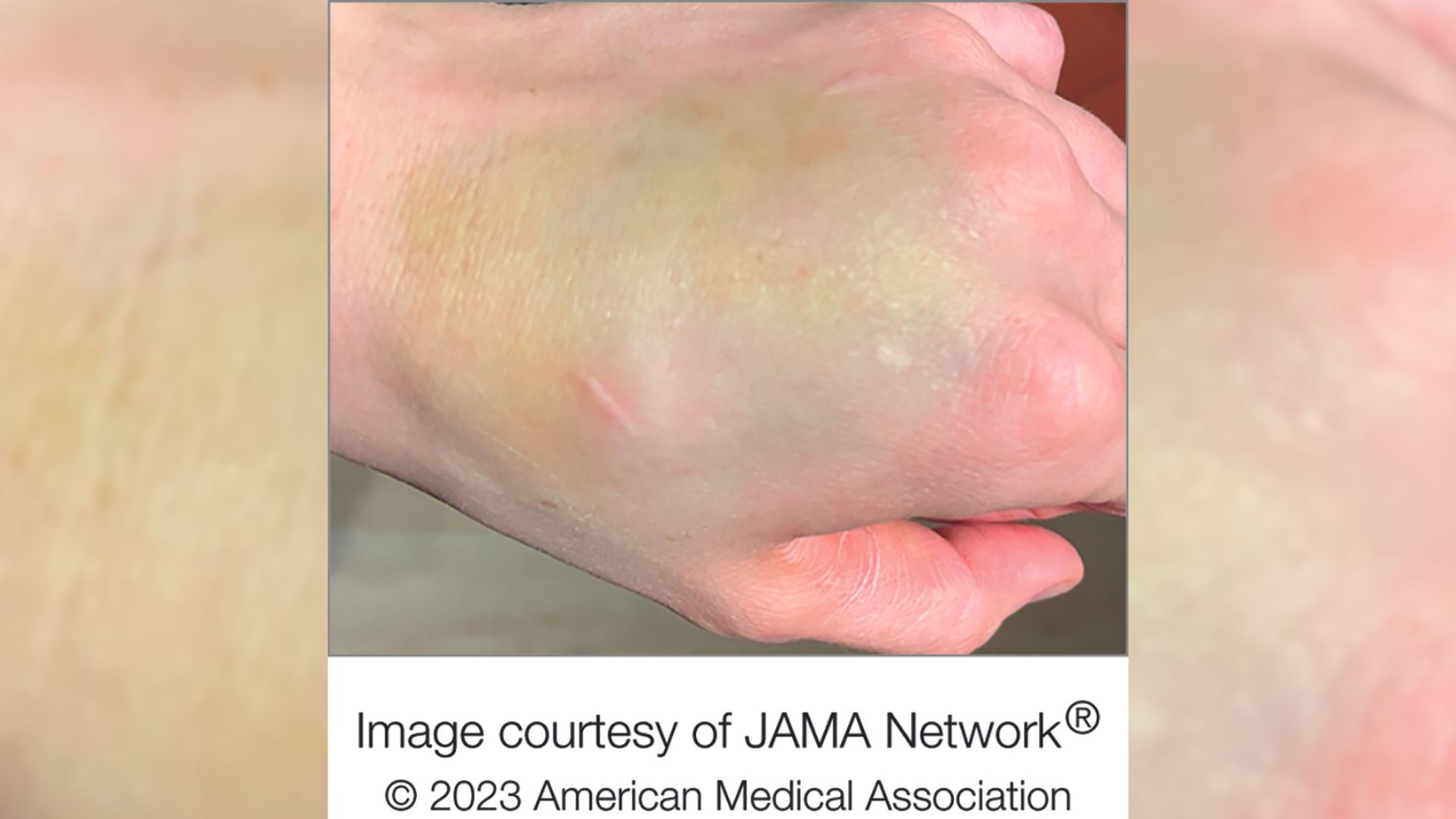One strange greenish-blue bruise it appeared on the hand of a woman after an injury occurred during a yoga session: even after ice and rest, it showed no sign of improvement. Eventually, the woman discovered she had a down cancer slow growing.
Doctors described the woman’s strange case in a new report published on Wednesday, Feb. 8 at JAMA Dermatology. The patient, who is in her 30s, reported that the bruise it appeared a few days after a left hand sprain. She went to the doctors 2 years later and the bruise was still there.
Doctors examined the hand, noting a hardened area blue-green on the back. X-rays revealed swelling in the soft tissue of the hand and magnetic resonance imaging (MRI) showed a small mass lying just under the skin.
The tissue taken from this lump was filled with fat cells, an iron-containing pigment called hemosiderin, and long, thin cells known as spindle cells. The latter appear in various cancers of the skin, lining of internal organs, bones and soft tissues, according to the National Cancer Institute. Doctors determined that the woman had a hemosiderotic fibrolipomatous tumor (HFLT), a rare type that forms most often on the foot or ankle but appears on the hand or wrist in up to 10% of reported cases.
“HFLT is rare and only recently described,the report’s authors noted. The condition was first described in 2000. Research suggests these abnormal growths are usually benign and rarely become cancerous, they reported. “The exact pathogenesis of HFLT has not yet been elucidated and the role that trauma plays in its development needs further investigation,” they added.
The physicians who first described HFLT thought that the masses could form as a result of a “reactive inflammatory process” which is activated after a person has suffered a traumatic injury. This is because many of their patients had sustained trauma to the same part of the body where an HFLT subsequently formed. Other doctors have proposed that the damage to the blood vessels may somehow stimulate the formation of the tumorsbut more research is needed to confirm the true cause of the condition, the report authors noted.
“To our knowledge, only one prior HFLT of the hand has been associated with prior trauma,they noted. That case involved a patient who injured his hand before developing the abnormal growth. “To our knowledge, twisting or sports-related injuries, as is the case with the current patient, have not been reported in the development of HFLT involving the upper extremity, wrist, or hand,said the authors.
